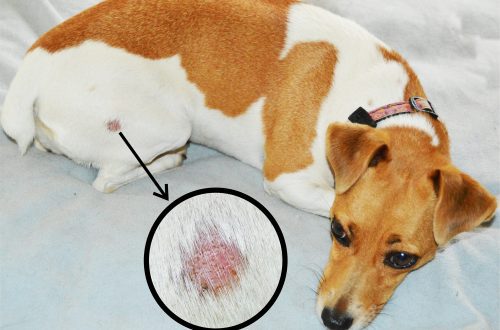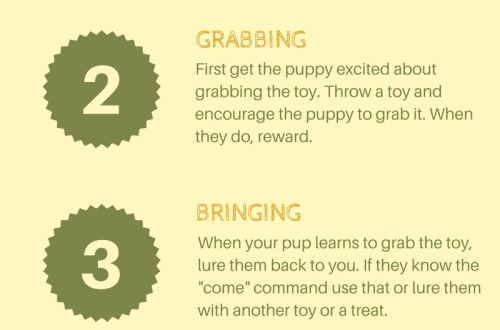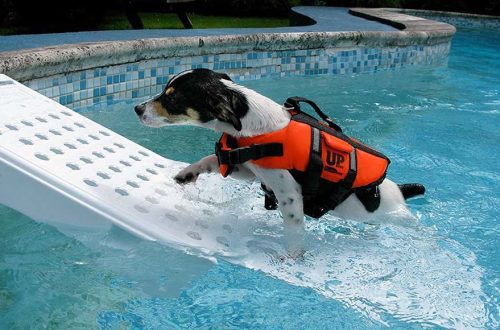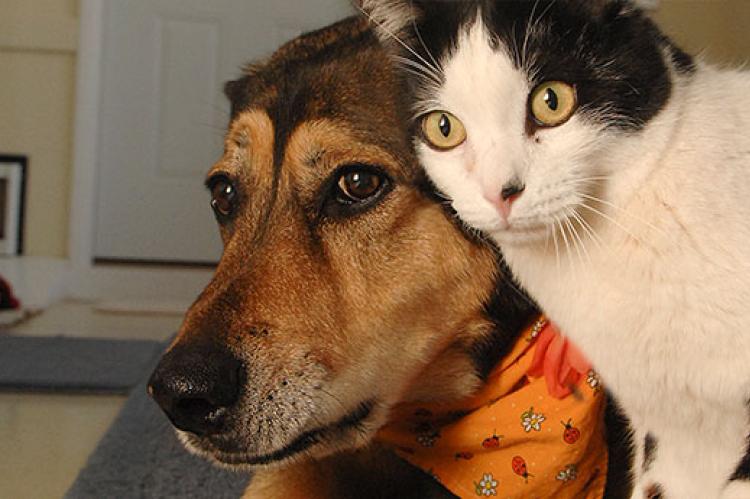
How to introduce a dog and a cat?
If we want a cat and a dog to coexist peacefully under the same roof, it is important to introduce them correctly. How to introduce a dog and a cat and how to solve problems if they arise?
Dog and cat can become friends, or at least remain neutral. Much here depends on us.
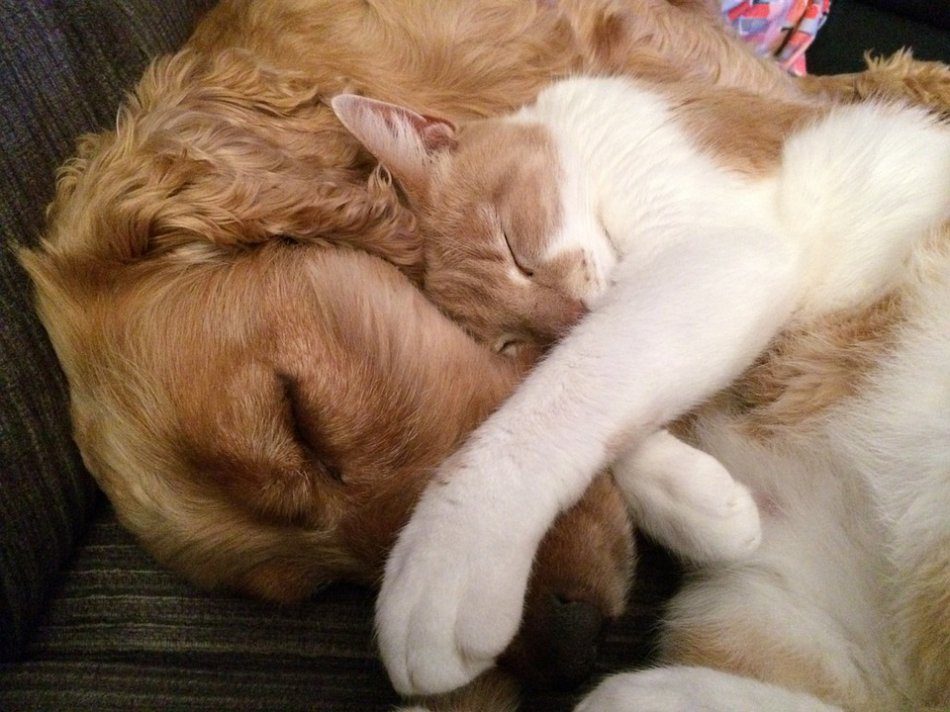
In the photo: a dog and a cat. Photo: pixabay.com
Contents
- If we bring a kitten to a house where an adult dog lives
- If we bring an adult cat into a house where an adult dog lives
- If we bring a puppy to a house where an adult cat lives
- If we bring an adult dog to a house where an adult cat lives
- What to do if a dog shows predatory aggression towards a cat
- If your dog or cat suddenly becomes aggressive
- If the dog constantly growls at the cat
- If the cat is aggressive towards the dog
- If dog-cat games get rough
If we bring a kitten to a house where an adult dog lives
As a rule, kittens, if they have not had a negative experience with dogs, are open to new acquaintances. And if the dog does not show aggression, the acquaintance can go smoothly. How to introduce a kitten to an adult dog?
- Bring the cat carrier into the house and let the dog sniff it. Watch her reaction.
- Prepare a separate room for the kitten, where everything you need will be located (tray, bowls, houses, scratching post, etc.) and let the kitten out of the carrier there.
- Limit your dog’s access to the kitten’s room.
- In no case do not leave animals unattended so that the dog does not harm the kitten.
- Be careful that the kitten does not climb to the dog when she eats.
- Do not deprive the dog of attention. It is important that she does not feel discomfort from the appearance of a new tenant.
If we bring an adult cat into a house where an adult dog lives
It is more difficult to introduce an adult cat to a dog than a kitten, since an adult cat can already form a negative experience of communicating with dogs. Yes, and dogs react to adult cats, as a rule, more aggressively than to kittens.
- Prepare a separate room for the new household, where everything the cat needs will be located.
- Be sure to spend time in the room where the cat is to leave your scent and blend it with the cat’s scent.
- Close any gaps that a cat can crawl into. But there should be an alternative in the form of houses or at least boxes.
- When you bring a cat into the house, let it out in this particular room prepared for it.
- Before meeting, try to do everything so that both the cat and the dog are relaxed. The dog should be well walked and follow the relaxation protocol or offer mind games if they relax the pet. A cat can be given mild sedatives (but you should first consult a veterinarian).
- Feed the dog and cat on either side of the door to the “cat” room (the door must be closed, of course). Watch the reaction of the animals. If they are uncomfortable, increase the distance. In this way, both the cat and the dog will get used to the smell of each other.
- Place cloths with the smell of a cat in the place where the dog eats, and vice versa, and let’s sniff them. This will cause a pleasant association with the smell of another animal.
- The door opens slightly so that the dog and cat can see each other while eating. It is important to monitor the reactions of both animals in order to avoid fear or attack.
- When you go for a walk with the dog, ask someone to let the cat out so that she can walk around the house and study it. The dog should also visit the cat’s room, but only at a time when the cat is not there.
- Introduce a cat to a dog in the same room. It should be neutral territory. You can put a barrier between the animals (for example, a children’s fence), or you can, if you are sure that the cat will not attack the dog, take the dog on a leash and put on a muzzle. If you are not sure how the cat will behave, it is worth putting it in a carrier (having accustomed to it in advance). Before the meeting, it is better to calm both animals. It is desirable that one person takes care of the dog, the second – the cat. Speak slowly and calmly, movements should be smooth. Give the dog and cat the opportunity to look at each other, treat and praise for calm behavior. From time to time switch the attention of the animals to yourself – it is important to understand if the dog can switch at all, or if he has frozen and stared at the cat, preparing to attack. It is better if the first meeting lasts no more than a few minutes.
- Hold such meetings as often as possible, but keep them short (the first – no more than 5 minutes, if possible less).
- Reinforce calm dog behavior. If you wait until the dog starts to get excited, bark or rush to the cat and begin to call him to order or punish him, the cat will arouse negative associations in him, and your previous efforts to organize an acquaintance will be in vain.
- Pay close attention to how animals behave, track body language. It is important to avoid a level of arousal that makes it difficult for a dog or cat to tolerate the presence of another animal and control itself, so that at the first sign of arousal, the meeting should be ended.
- When a cat and a dog can safely be in the same room, they can be caressed or treated in the presence of each other, play with them. So they can observe each other and develop positive associations for the presence of another animal. Choose your favorite treat and temporarily give it only in this situation. If tension arises, end the meeting immediately.
- Gradually move things from the cat’s room to other rooms, give the cat access to them, but limit access to the cat’s room for the dog (for example, you can leave a gap in the door to the cat’s room so that the cat can go there, but the dog cannot).
- Separate animals at first if you can’t control their communication. It is important to avoid uncontrolled situations in which some of the animals may have a negative experience.
The duration of each stage depends on the behavior of both animals.
Do not hurry! It is better to spend more time at the beginning, but to do everything smoothly and without stress, than to make the dog and cat suspicious, or even hatred of each other, and then correct this behavior for a long time, endangering the health, and even the life of the pets.
If something went wrong, go back to the previous step.
If we bring a puppy to a house where an adult cat lives
- Before bringing a puppy into a house where a cat lives, make sure that the cat has enough opportunities to avoid conflict. It is important that a second tier is equipped, to which the puppy will not reach.
- It is better to keep a puppy for a couple of days in a separate room.
- Play with the puppy, but do not let him bully the cat with active games.
- If the puppy is chasing a cat, call him back, switch to toys.
If we bring an adult dog to a house where an adult cat lives
- Before bringing a dog into a house where a cat lives, make sure that the cat has enough opportunities to avoid conflict. It is important that a second tier is equipped, which the dog cannot reach.
- If the appearance of a dog will cause some kind of rearrangement in the house, then it is better to do this in advance. The rearrangement is done gradually, the things of the cat are shifted little by little.
- It is important that the cat knows exactly where its tray, bowls, houses, etc. are located, and has free safe access to them.
- Make sure that the dog cannot drive the cat into a dead end.
- The cat should be able to hide from the dog – preferably in a separate room where the dog does not have access. But don’t lock the cat in there!
- When you first bring a dog into the house, it is important that the cat does not run out to meet you. It is better that at the time of your arrival she was in a separate room.
- When the dog has looked around a bit in a new place, sniffed everything, you can take it to the room where the cat is. It is important that the dog is on a leash and muzzled.
- Praise your dog for being calm and for taking his eyes off the cat to look at you.
- If both the dog and the cat react calmly, you can let them sniff each other.
- Praise the animals, treat them if everything went well.
- The first dating sessions should not last more than a few minutes. For the first few days, keep the cat and dog in separate rooms, meeting 2 to 3 times a day.
- If a cat or dog shows aggression, the acquaintance goes through stages, starting with feeding through the door and exchanging scents through rags. But it is also important to understand the type of dog aggression: predatory, resource defense or fear aggression.
What to do if a dog shows predatory aggression towards a cat
Predatory aggression is a dangerous thing: in this case, the dog can kill the cat. Therefore, it is extremely important to keep both animals safe. What can the owner do in this case?
- First of all, ensure safety. Do not allow the dog and cat to communicate if you cannot control this communication.
- Let the dog observe the cat in a safe environment. The dog must be on a leash and muzzled, and it is better if there is a barrier between it and the cat (for example, a children’s fence).
- Choose a distance at which the dog can look at the cat and not rush at her. If the dog cannot control himself, increase the distance.
- Praise the dog when it turns away from the cat.
- Reduce the distance very gradually.
- Start walking around the room. Vary the distance until you understand how far the dog can walk past the cat without reacting to it. Reinforce this behavior and gradually reduce the distance.
- Let the muzzled dog sniff the cat, but only if the dog is calm.
- Hold the dog or tie it up and let the cat walk around the room. Reinforce calm dog behavior.
- If the dog reacts calmly to the cat every time, you can let it go and let them stay in the room together in your presence.
- Be sure to monitor the behavior and body language of both animals, notice the slightest signs of arousal and stop communication. Don’t let negative experiences form.
Keep in mind that this type of aggression in a dog can take a very long time (sometimes years), so you will have to be patient.
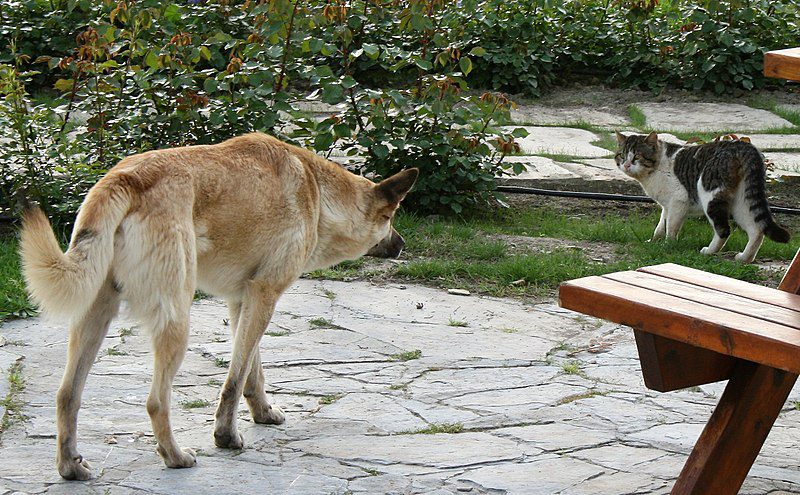
Photo: commons.wikimedia.org
If your dog or cat suddenly becomes aggressive
It would seem that peace and harmony reigned in the relationship between the dog and the cat, and then suddenly (for no reason, as the owners say) one of the pets began to behave aggressively towards the other. What to do in this case? It depends on the reason for this behaviour.
- rule out the disease. Perhaps sudden irritability is a sign of illness, so you should contact your veterinarian.
- Analyze what preceded the manifestation of aggression. Perhaps one of the animals recently visited the veterinary clinic and “brought” someone else’s smell. In this case, it is better to separate the pets until the “pack smell” returns, and allow communication only under supervision.
- There may have been redirected aggression. For example, the dog got overexcited, and the cat got “under the hot paw” (or vice versa). In this case, you will have to go through the dating scheme again to show the pets that they are safe with each other and develop positive associations from communication.
If the dog constantly growls at the cat
- Rule out disease in dog. Perhaps irritation is a sign of malaise.
- Does it happen in the same places? If yes, analyze if there is competition for vital resources, if there are any intersections in the habitats of the dog and cat. For example, if they run to meet you and get under each other’s feet, this can become a source of discontent. In this case, it is worth providing the cat with the opportunity to move around the second tier in places of conflict.
- Watch the dog and try to remove the cat before it starts to growl (at the first minimal signs of displeasure).
- Praise your dog when he reacts calmly to the cat.
If the cat is aggressive towards the dog
Most often, a cat’s aggression towards a dog is associated with fear. What to do in this case?
- No need to punish the cat – it will only aggravate the situation.
- Prevent situations in which the cat shows aggression (for example, think about how to correctly distribute the territory so that the cat has safe free access to important resources and does not become cornered).
- Develop positive associations with the presence of the dog in the cat.
- If aggression occurs in the same places, it is worth “separating traffic flows” – for example, equipping a second tier for a cat in this very place.
- Do not place the cat’s bed where it is convenient for her to reach her paw to the dog – for example, near the passage.
If dog-cat games get rough
If a dog imposes rough games on a cat, this can ruin their relationship and even result in injury. What to do in such a situation?
- Give your dog a chance to play, but in an acceptable way, such as with toys, with you or with other dogs.
- Give the cat the opportunity to hide on the second tier, where the dog will not reach.
- Reinforce the dog’s calm behavior around the cat.



